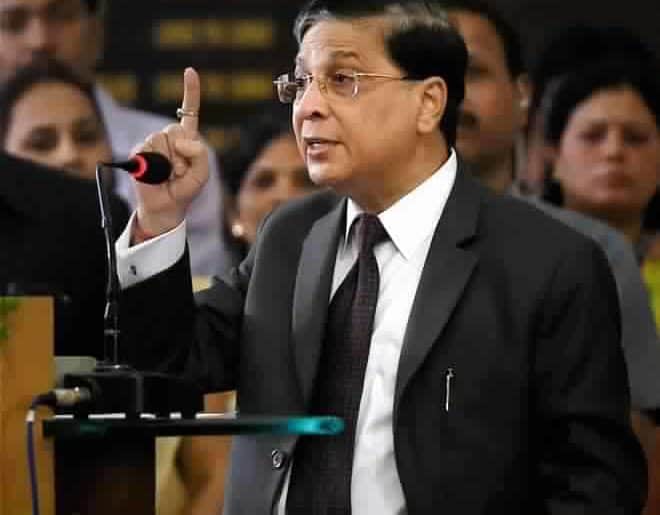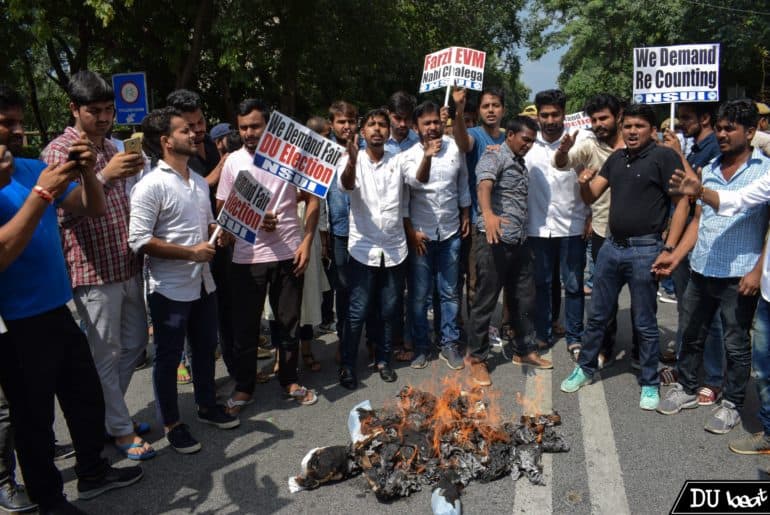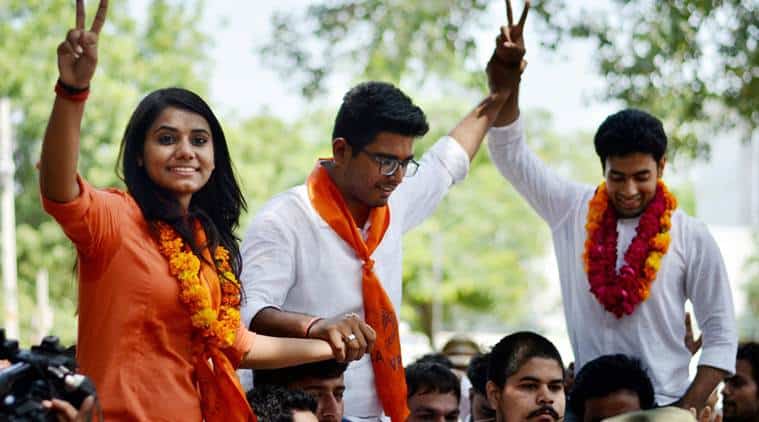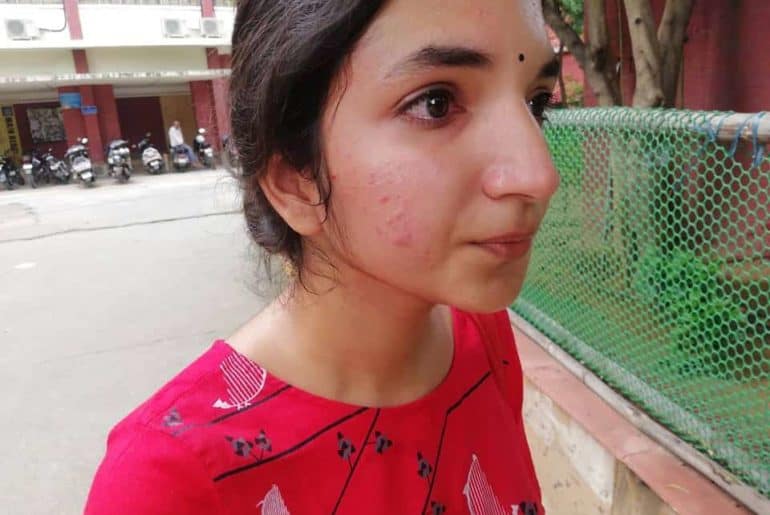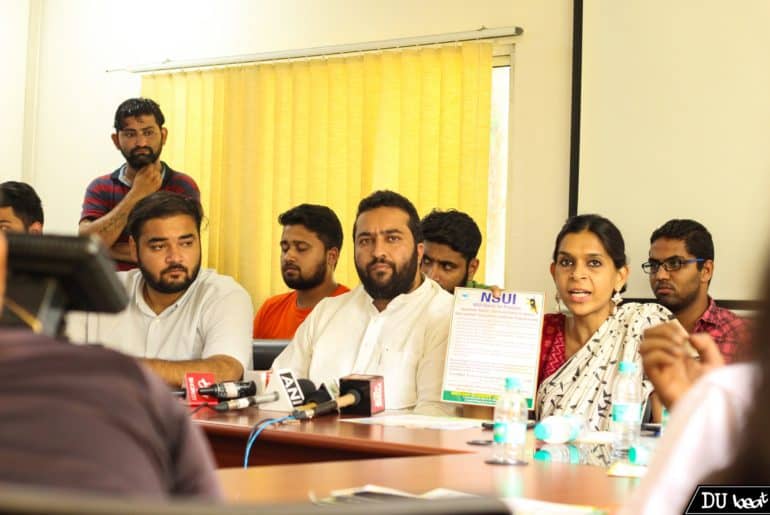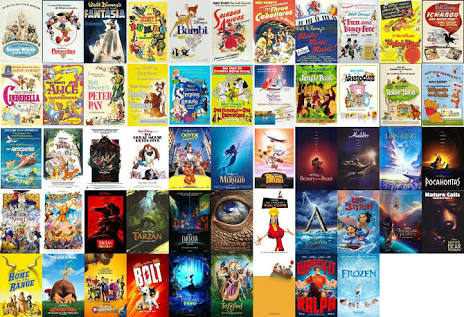DU Beat bids farewell to CJI Dipak Misra on the last day of his tenure, the man under whom the Supreme Court delivered historic judgements.
On 6 September 2018, section 377 of the Indian Penal Code that criminalised ‘unnatural sex’ between consenting homosexuals was revoked claiming it to be one ‘irrational, indefensible and manifestly arbitrary’ law. A decision that revolutionized our society and one that redefined the meaning of love for us, was just one among a flurry of Supreme Court judgements in the month of September. Another being the striking down of bar on the entry of women between the ages of 10 and 50 into the Sabrimala Temple in Kerala marking the end of a hectic week that saw benches led by outgoing Chief Justice of India, Dipak Misra, delivering 20 verdicts over five days.
The Chief Justice of India (CJI) Dipak Misra’s tenure ends on 1 October; but it is an understatement to claim that it has been marked as being eternally inspiring for all successive decision makers of our country. It is not common to see change, it takes time. But the changes in the Indian law made by outgoing CJI Dipak Misra remind us that changes can become. Nothing can be more reassuring. From landmark judgements to scintillating statements, Justice Misra is a rare phenomenon.
Justice Dipak Misra, who was part of the bench that confirmed the death sentence of the four convicts in the December 16 gangrape case and passed the order for mandatory singing of the national anthem in cinema halls, has witnessed the diametric responses to law enforcement. It is this spectrum that enables more informed decisions, and in turn, allowing for a more inclusive yet diverse India.
In his last week in office, over a duration of 5 days, the CJI delivered 20 crucial judgements. The cases decided in the week of September 22-28 covered a range of issues — from the criminalisation of politics to the discrimination inherent in India’s old adultery law, from the religious aspect of the Ram Janambhoomi title dispute to the civil liberties of activists, and from the legality of the government’s ambitious identification project to the bar on the entry of women between the ages of 10 and 50 into the Sabarimala temple.
On September 25, in context of the petitions seeking to ban charge-sheeted politicians from contesting elections, the CJI expressed concern at the rising criminalisation of politics but said it was not for the court to lay down such rules and that it was the parliament that has the right authority to deal with the matter.
On September 26, the CJI-led bench delivered nine judgments, including the closely watched Aadhaar verdict and the path-breaking order allowing live-streaming of court proceedings.
On September 27, the CJI wrote the judgment striking down the country’s archaic adultery law that treated “husbands as masters”.
Legal experts and advocates claim that the flurry of verdicts seen over the last five days has been unprecedented. “I haven’t seen an outgoing Chief Justice of India deliver so many judgments in the last week of his office. But it also has to be seen in the backdrop that he led benches that have heard so many important issues in the last year. And understand that these judgments are going to have far-reaching consequences,” said advocate Anil Mishra of the Supreme Court.
Advocate Sunil Fernandes, too, termed the development rare. “Seeing the work load Justice Misra picked up in the last few months, this was bound to happen. He was also part of many constitutional matters. Full credit for what he has done in the last week. He has left his mark on history and will be remembered for playing a role in the constitutional development.” Justice Misra retires on 2 October. The new CJI Ranjan Gogoi (being the first northeast Indian CJI ever) has a tenure of next 13 months.
It is not completely wrong to expect him the streak of just decisions in the wake of Justice Misra’s example. The idea of judicial justice is highly subjective because among other reasons, it calls for moral action. But moral action is more insightful and hence ambiguous than it seems on the face of it. “Morality cannot be martyred at the altar of social morality. Only Constitutional morality exists in our country,” in Justice Misra’s own words. A passionate upheaval of thought has always been a pre-requisite for an upheaval of a social structure. In Justice Misra’s insightful statements, he questions complexities and intricacies of our social backgrounds. In a unified spirit of democracy, his words on homosexuality that redefined ‘love’ or on adultery that revealed the patriarchal truth to our society, or on the Sabarimala verdict redefining social reach of women, CJI Misra has been a remarkable personality of the Indian Judiciary.
In his pursuit of a better India; more accepting, more mentally uplifted, more insightful, more appreciative, Justice Misra has worked on true ideals of our law – to be honest, just, and fair. Challenging all odds, the month of September saw the becoming of this India, in its nascent being. There are miles yet to go, but the first few have been traversed.
Thank you, Chief Justice of India Dipak Misra. Fare well.
Feature Image Credits : The Tribune
(With Inputs from Hindustan Times)
Kartik Chauhan

